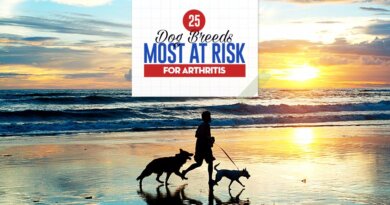How and Why Science Classifies Dog Activity Levels – Truth about Pet Food
Personal story…

I have two dogs, Gracie and Bennie. Gracie is a 7 or 8 year old terrier mix (she was adopted as an adult – we don’t know her age for certain). Bennie is my 8 month old Papillion.
I take Gracie and Bennie for a 30 to 45 minute walk every morning, the two dogs do a ‘zoomies’ run in the yard every day – that lasts about 5 minutes, and Bennie insists that I throw a toy for him to chase every evening which lasts from 10 to 15 minutes (Gracie participates sometimes, but mainly supervises the play). So, in total, my dogs get 45 to 60 minutes of official activity a day. I was confident they were ‘very active’ dogs. But then I learned how science determines ‘Active’ dogs.
Why is activity level important?
Activity level determines how many calories dogs need a day.
Provided by Dr. Susan Recker from Animal Diet Formulator – based on National Research Council research:

Per science, my dogs barely classify as Active. I’m not proud of that. However, the activity level classification of my pets is something I need to be well aware of. Knowing they barely classify as Active is my motivation to increase their activity level and perhaps move them into the next category (Adult-More Active).
Pride aside, there is another motivation for me to increase the activity level of my dogs:
Dog activity level determines calorie needs, and pet foods are complete and balanced based on calorie consumption.
All complete and balanced pet foods are formulated to provide all the required nutrients based on a certain amount of pet food being consumed (a certain amount of calories consumed). The blue boxed section in the above chart is the activity classification of AAFCO Nutrient Profiles. The AAFCO Nutrient Profiles that complete and balanced pet foods are required to meet (for Adult Maintenance and All Life Stages) are based on a K factor of 125.
What is a K factor?
A ‘K factor’ is based on Kleiber’s law (“an animal’s metabolic rate scales to the 3⁄4 power of the animal’s mass.”) AAFCO’s use of the K factor of 125 means that the required nutrient levels are complete and balanced for dogs that consume the amount of food a ‘More Active’ dog would consume.
For dogs of the same size – the nutrient requirements stay the same (based on their weight), BUT the calorie requirements change related to their activity levels. A pet food formulated to a lower K factor (such as ’90’) would provide less calories but assures the nutrient requirements are met. Unfortunately – for now – we do not have pet foods formulated to a lower K factor.
With my dogs both being of similar weight, Gracie requires less calories a day due to her age and less activity – Bennie requires more calories a day due to his age (young dog) and higher activity. BUT both dogs – being of similar weight – require the same amount of nutrients (protein, vitamins and minerals).
Per the National Research Council…

… and per AAFCO Nutrient Profiles my dogs (10 pounds) would need to consume 404 kcals of dog food each a day to receive a complete and balanced diet. BUT, with Gracie especially (as an older, barely active dog) if I fed her that many calories a day I risk her becoming overweight. But if I don’t feed her that much food per day, I risk her being nutrient deficient.
Remember…the complete and balanced nutrition ONLY happens if the dog (or cat) is consuming enough food to provide all the required nutrients.
We – Dr. Karen Becker, pet food formulator Steve Brown, and myself – have had several meetings with FDA and discussions with AAFCO regarding the need for AAFCO Nutrient Profiles to address the nutritional needs of pets that require less food (due to their activity level or age) or more food (working dogs). As example we have suggested a Nutrient Profile of K factor 90 be added so that a sedentary dog receives the proper amount of nutrients based on consuming less calories a day.
Unfortunately our pleas have fallen on deaf ears (but we remain hopeful they will do the right thing).
In the meantime, I supplement my dogs food with raw eggs (from pasture raised chickens – one egg split between the 2 dogs and my 5 cats four times a week) and with sardines (in water, 1/2 sardine per dog and each cat once a week). I also give all of my pets raw milk (unpasteurized) daily – about 1/2 ounce each per day.
And in the meantime, I intend to increase the activity level of my dogs (and my cats) to better match the AAFCO Nutrient Profiles for More Active pets.
For cats…unfortunately there is not sufficient science available to determine activity classifications. But the National Research Council has determined calorie requirements. The blue box area is the calorie requirement of AAFCO Nutrient Profiles for cat foods – which again is not addressing the needs of less active or overweight cats.

Take a close examination of your pet’s activity level and if necessary get them moving more. And send the FDA and AAFCO an email – ask them to promptly develop Nutrient Profiles for less active and senior pets. Email FDA at: AskCVM@fda.hhs.gov, Email AAFCO at: aafco@aafco.org.
Wishing you and your pet(s) the best,
Susan Thixton
Pet Food Safety Advocate
Author Buyer Beware, Co-Author Dinner PAWsible
TruthaboutPetFood.com
Association for Truth in Pet Food

Become a member of our pet food consumer Association. Association for Truth in Pet Food is a a stakeholder organization representing the voice of pet food consumers at AAFCO and with FDA. Your membership helps representatives attend meetings and voice consumer concerns with regulatory authorities. Click Here to learn more.
What’s in Your Pet’s Food?
Is your dog or cat eating risk ingredients? Chinese imports? Petsumer Report tells the ‘rest of the story’ on over 5,000 cat foods, dog foods, and pet treats. 30 Day Satisfaction Guarantee. Click Here to preview Petsumer Report. www.PetsumerReport.com
Find Healthy Pet Foods in Your Area Click Here

The 2023 List
Susan’s List of trusted pet foods. Click Here to learn more.

The 2023 Treat List
Susan’s List of trusted pet treat manufacturers. Click Here to learn more.



